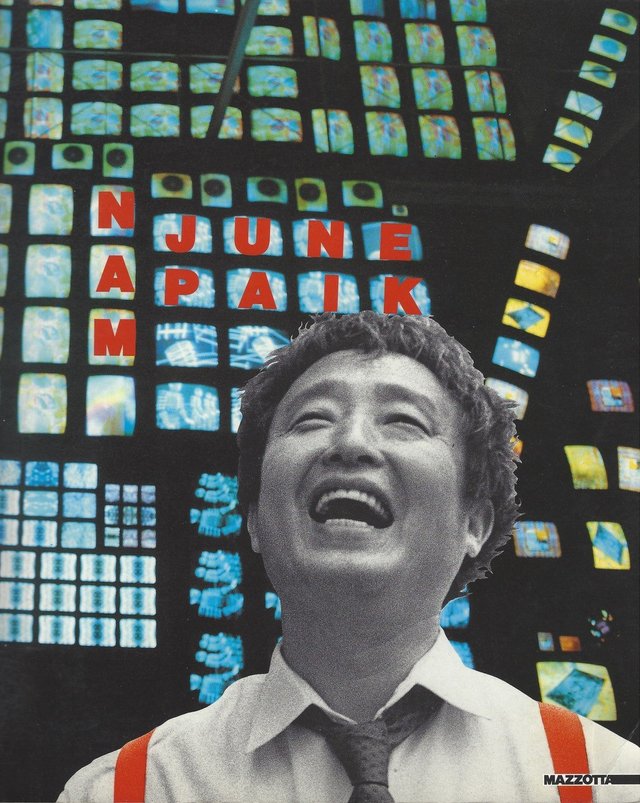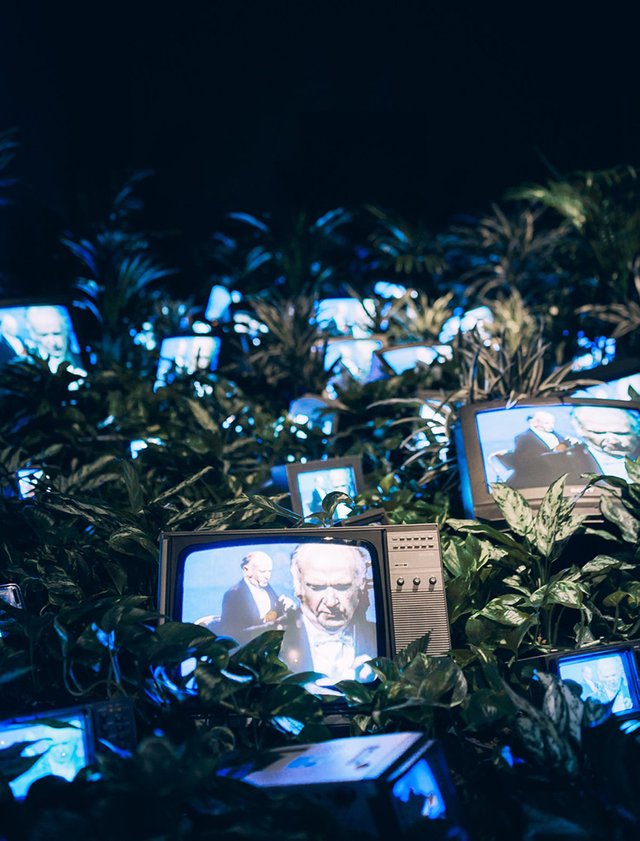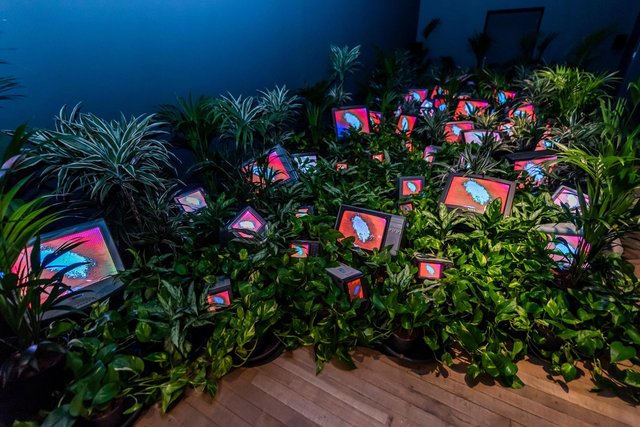ITA:
Riconosciuto come il padre della videoarte, Nam June Paik oggi è considerato uno degli artisti più influenti della nostra cultura. Il suo scopo è molto preciso: unire arte e tecnologia per creare un’esperienza di condivisione che racconta di tutti noi e della nostra vita quotidiana. La sua più grande fortuna è stata quella di essere un artista aperto al cambiamento e attento a ciò che gli avveniva intorno.
Nato in Corea del Sud nel 1932, ha vissuto in Giappone – dove ha studiato musica – Germania e Stati Uniti, luoghi in cui ha conosciuto grandi artisti come Wolf Vostell.
Paik ha sempre voluto utilizzare le tecnologie per condividere e distribuire l’arte e creare un’interazione con chi partecipa al processo creativo delle sue opere e con altri artisti. È proprio questo desiderio di condivisione e collaborazione che lo porta ad avvicinarsi, intorno agli anni ’60, ai membri del movimento Fluxus: un network internazionale di artisti, compositori e designer conosciuti per aver mescolato diversi media e diverse discipline artistiche.
Nelle sue opere mette in discussione i confini tra oriente e occidente e quelli tra arte e musica e arte e tecnologia.
ENG:
Recognized as the father of video art, Nam June Paik is today considered one of the most influential artists in our culture. Its purpose is very precise: to combine art and technology to create a sharing experience that tells about all of us and our daily life. His greatest fortune was to be an artist open to change and attentive to what was happening around him.
Born in South Korea in 1932, he lived in Japan - where he studied music - Germany and the United States, places where he met great artists such as Wolf Vostell.
Paik has always wanted to use technologies to share and distribute art and create an interaction with those who participate in the creative process of his works and with other artists. It is precisely this desire for sharing and collaboration that leads him to approach, around the 60s, the members of the Fluxus movement: an international network of artists, composers and designers known for having mixed different media and different artistic disciplines.
In his works he questions the boundaries between East and West and between art and music and art and technology.

ITA:
Protagonista di molte delle sue opere è la televisione e Tv Garden ne è un perfetto esempio. Questa videoinstallazione rappresenta l’idea di futuro secondo Nam June Pik ed è stata creata per la prima volta nel 1974.
È un’istallazione su larga scala in quanto è composta da ben 40 televisori immersi in una vera e propria giungla di piante tropicali, creando così un paesaggio in cui natura e tecnologia si uniscono. L’opera, infatti, nasce proprio dall’idea buddistha che ogni cosa al mondo sia collegata con ciò che la circonda.
Esistono due diverse interpretazioni dell’opera: potremmo vederla come un paesaggio naturale infestato dalla tecnologia, oppure come una convivenza tra questi due mondi.
Uno degli elementi più interessanti, però, è che si tratta di un’opera nell’opera in quanto tutti i televisori trasmettono contemporaneamente un’altra opere di Paik: Global Groove. Si tratta di un video realizzato nel 1973 e che mescola musica di Beethoven con scene di danza e pubblicità giapponesi.

ENG:
The main character of many of his works is television and Tv Garden is a perfect example of this. This video installation represents the idea of the future according to Nam June Pik and was first created in 1974.
It is a large-scale installation as it is composed of 40 televisions immersed in a jungle of real tropical plants, thus creating a landscape in which nature and technology come together. The work, in fact, was born from the Buddhist idea that everything in the world is connected with what surrounds it.
There are two different interpretations of the work: we could see it as a natural landscape infested by technology, or as a coexistence between these two worlds.
One of the most interesting elements, however, is that it is a work within the work as all the televisions simultaneously broadcast another work by Paik: Global Groove. It is a video made in 1973 and which mixes Beethoven music with Japanese dance scenes and commercials.
